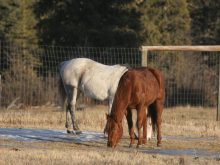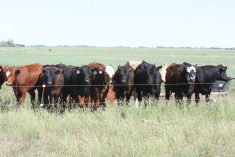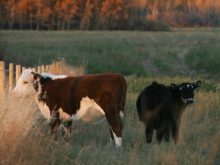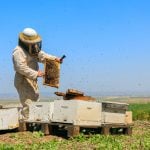I had a conversation with a veterinarian recently who was trying to deal with an abortion storm in a client’s cow-calf herd.
The producer had seven cows abort and most of these abortions were occurring at about six to seven months of gestation.
A fetus was submitted to the diagnostic laboratory and it showed signs of multiple areas of damage or necrosis of the liver. This is a classic sign of infectious bovine rhinotracheitis (IBR) and a subsequent PCR test would confirm that diagnosis.
Read Also
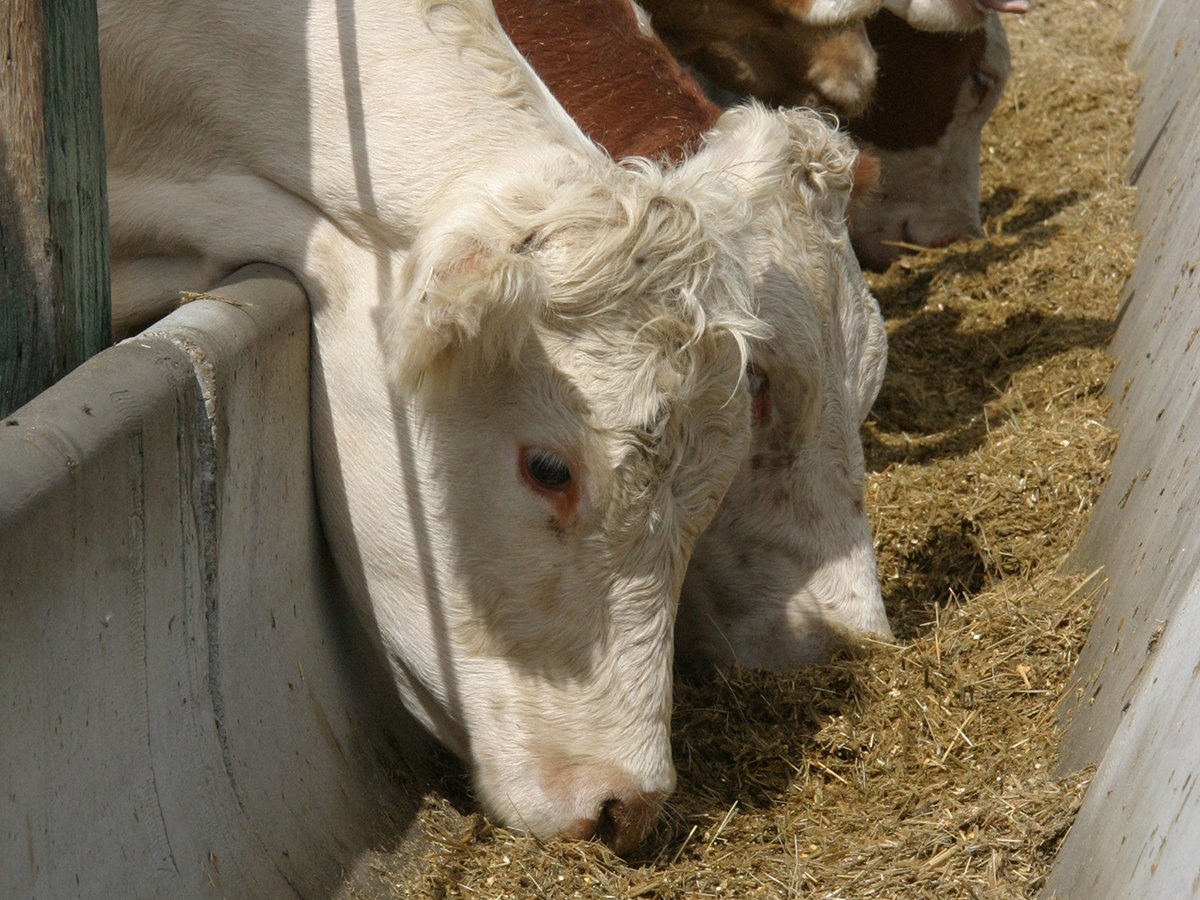
Alberta cattle loan guarantee program gets 50 per cent increase
Alberta government comes to aid of beef industry with 50 per cent increase to loan guarantee program to help producers.
This was not good news. Unfortunately, the producer had not vaccinated his cow herd and the animals had no immunity against the impacts of IBR virus.
IBR virus is a herpes virus, which is the same family that causes chickenpox, shingles and cold sores.
All herpes viruses can cause a long-term latent infection. If an animal is infected with IBR virus and recovers from the disease, the virus is not removed, but can stay within the nerve cells as a latent infection and become reactivated in the future, usually associated with a stressful event.
This is often how IBR virus is introduced into a herd. A purchased animal that has had IBR in the past can start shedding the virus again, infecting animals that aren’t vaccinated.
IBR virus is also highly contagious and is easily spread from animal to animal. As a result, in unvaccinated herds, abortion rates can be as high as 30 to 60 percent of pregnant cows. Just ask a retired large animal veterinarian about the IBR abortion storms they dealt with many years ago, before the advent of effective vaccines. Historically, it was the most common cause of abortion seen in diagnostic labs across North America.
IBR infections can cause syndromes affecting the respiratory system and the reproductive system.
The respiratory form of the disease was often called rednose because of the severe inflammation that occurs in the upper respiratory tract.
The nasal passages and trachea are primarily affected with severe inflammation and tissue damage, and infected cattle will have a very high fever, coughing and difficulty breathing. Some animals may show signs of eye discharge and conjunctivitis similar to pinkeye.
This viral infection causes severe damage to the cilia of the trachea and makes the animals much more susceptible to bacterial causes of pneumonia, which would often be the ultimate cause of death in animals infected with IBR.
If unvaccinated cows are infected during mid-gestation, they are highly likely to abort. The virus is transmitted from the upper respiratory tract via white blood cells to the placenta and ultimately to the fetus. The virus causes an inflammation of the placenta and ultimately kills the fetus. Abortion rarely occurs until several weeks after the initial infection and as a result the fetus is often autolyzed and decomposed by the time the abortion occurs.
Another significant syndrome can be seen in neonatal calves if they become exposed to IBR virus. The virus causes a highly fatal disease in newborn calves if they are infected and these calves will display high fevers, respiratory symptoms and pneumonia.
Fortunately, we have vaccines that are effective at preventing IBR. This is one of the “core” antigens that should be included as part of the vaccine protocol for all cattle.
All major companies that produce cattle vaccines will make several versions of viral vaccines that contain IBR virus as one of the primary antigens in their combination viral vaccines. These vaccines can be modified live or killed injectable products and some vaccines are available for intranasal administration as well. Your veterinarian can recommend the most appropriate vaccine and protocol for your herd’s situation.
However, regardless of how your herd is managed, every breeding animal should receive an IBR vaccine as part of the annual protocol to protect them against both the respiratory and reproductive forms of this highly contagious disease. Some of the modified live vaccines can cause abortions if given to pregnant animals, so it is important to read the label instructions and administer the correct vaccine at the appropriate time.
Unfortunately, during an outbreak of an IBR abortion storm, we have limited choices. We can attempt to vaccinate in the outbreak’s face and in these situations we usually use an intranasal vaccine to give more rapid protection.
However, once we see abortions, the virus was often introduced a few weeks earlier, and as a result vaccinating in the face of an outbreak may have limited value.
Antibiotics may help protect against some secondary infections for the respiratory form, but they won’t help prevent abortions.
Make sure you don’t have to deal with this kind of outbreak. It’s preventable by using the appropriate vaccines in your breeding herd. It’s one of the main reasons that this is included as a core vaccine for cattle in all North American herds.
John Campbell is a professor in the department of Large Animal Clinical Sciences at the University of Saskatchewan’s Western College of Veterinary Medicine.





